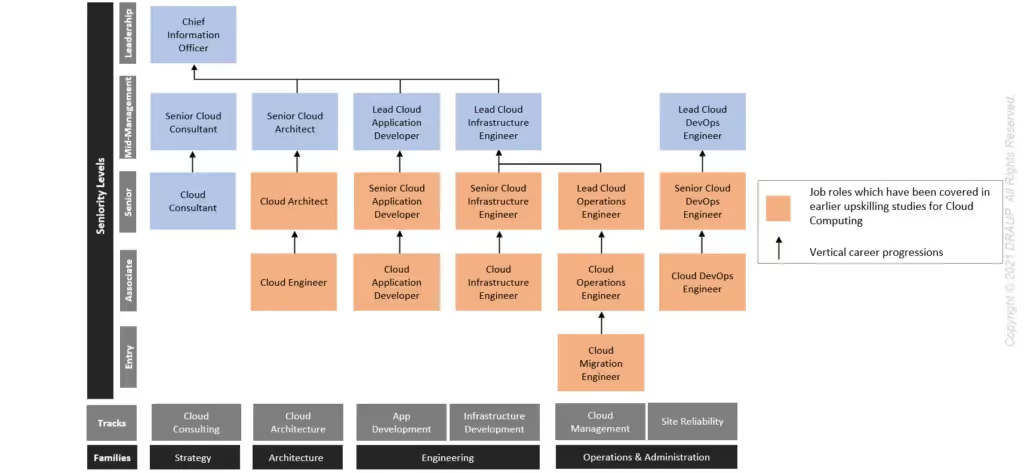Nudging your way towards Future Skills Planning with Reskilling
Dr. Richard Thaler is an American Economist and a distinguished professor at the University of Chicago- Booth School of Business. Richard Thaler once hosted a dinner for his colleagues and graduate students. The meal included cocktails and food. Before serving the food, Dr. Thaler served the guests some cocktails and placed a bowl of cashews. Dr. Thaler noticed that the guests were eating the bowl of cashews at a rapid pace. Worried that his guests may not have enough room to eat food, Dr. Thaler moved the cashews bowl out of sight. Many guests thanked him for doing that. Dr. Thaler was surprised. When people enjoyed eating the cashews, his move to take the cashews bowl away should have created some resentment. Instead, people thanked him for being thoughtful. Dr. Thaler used this incident as an inspiration and went on to create his Nobel prize-winning work called “The Nudge.” Dr. Thaler theorized that people require positive Nudges in steering them towards optimal decisions.
For organizations to win the Global Talent War, adapting data-driven Nudges is essential. But such Nudges have to be designed through careful metrics and processes. For example, when a job requisition is open, how great it will be if we can say the “Reskilling Coefficient for this job is over 80%.” Such a data-driven Nudge will be very powerful and effective in using internal employees for the job. It is not just communication; it is simulating the various scenarios. In my ideal dream, HR should have a Scenarios Planning Division combining Recruitment and L&D.
Let us look into this story. A few years ago, Waymo, which is Google’s self-driving car company, hit a roadblock. Self-driving cars collect a lot of real-life data by test driving and teaching the car how to handle various scenarios. Fleets of cars with sophisticated sensors and video cameras have cruised worldwide to collect billions of data points. But Waymo realized that they could never collect data on rare instances. A pedestrian suddenly running towards a car, for example. There are millions of such events that are rare, but it happens. What did Waymo do? Waymo hired an Engineer named James Stout to solve this problem. An avid gamer, James Stout designed an Alternate Reality model called CarCraft. CarCraft helps in simulating all the rare scenarios, an object flying towards a windshield while driving, another car aggressively cutting into your lane, and all other scenarios can be modeled for the algorithms to get intelligent. By 2021, Waymo has reached a point where human interactions are required only for every 30,000 miles. (Still, a long way to do, but they have made significant progress)
Such scenario planning is essential in Future Skills Planning. Let us now understand this through an example. One of the areas where Scenario Planning can work is in the area of Reimagining jobs.
How would we reimagine a Truck Driver job in the future? (keep in mind that this job is not automated as we expected in early 2000)
How great it will be to show the future possibilities in a table like this when hiring a truck driver. Breaking down the present-day responsibilities and identifying synergies with emerging roles, it is clear that Truck drivers will eventually move into a supply chain career or training the driving algorithms

Similarly, Call Center agents have enormous potential to become inside sales executives. (if they can manage irate customers and serve them, they can make conversations engaging prospects)

Such scenarios create an alternate reality and are essential to attract Generation Z talent into these jobs.
Another helpful tool for Scenarios Planning is Occupation Map. Organizations have a limited understanding of what is Entry-level jobs in many technologies. For example, Cloud- many organizations need Cloud Migration Engineers that can be quickly developed within the organization. Draup can develop such maps for you across AI, Cybersecurity, Digital Finance, Digital Marketing, and other critical areas.

Even these emails are a form of Nudge for you!.
Overall, we are pretty excited about the role HR can play under emerging circumstances. If we plan the initiatives correctly, we can accelerate transformation and adaptation and make the enterprises genuinely care for a great workplace.










.svg)




















.svg)





.svg)
